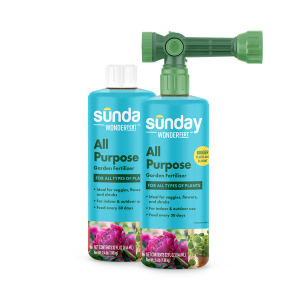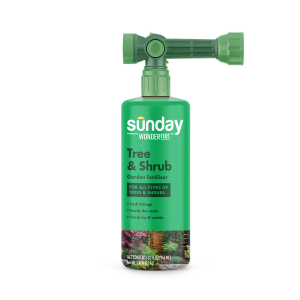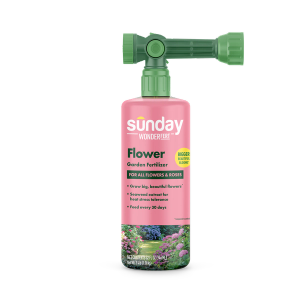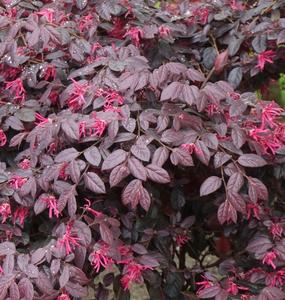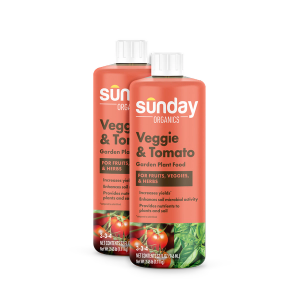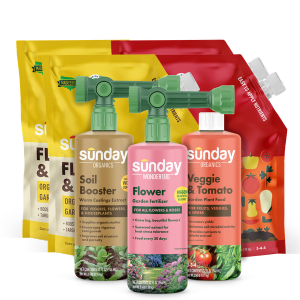What is pruning?
Pruning is the careful, thoughtful removal of branches and stems from a shrub or tree. “Careful” and “thoughtful” are keywords here because pruning is permanent. Most landscaping shrubs don’t actually need regular pruning unless there is damage, disease, or they’re posing a danger to people or structures (remember the three Ds!). Before we dig into when and when not to cut, let’s take a look at the benefits of pruning shrubs.
Why prune shrubs
Sometimes, you may want to prune a plant for solely aesthetic purposes—and that’s as good a reason as any. Maybe the plant is thriving in your care and outgrowing its space, or you just prefer a more compact form. Here are some other reasons to bust out the shears:
- Maintain plant health. Because dead tissue no longer serves to benefit the plant, it should be removed. Same goes for diseased tissue, which you should remove to keep it from spreading to healthy parts of the plant. Sometimes, it’s even beneficial to prune healthy tissue near the top of a large shrub to help sunlight reach below the canopy—improving the overall health and vigor of your plant.
- Maintain plant purpose. Did you know that pruning a shrub can actually make it fuller in the long run? Certain cuts, called “heading cuts,” remove the terminal flower buds on a branch; when these are gone, the plant goes into self-preservation mode by activating multiple lateral buds below it. Ultimately, this results in a “branchier” plant with more flowers and thus, more fruit.
- Maintain safety. Sometimes pruning a shrub is necessary to reduce physical risk to homeowners and their homes. Branches that are ripe for removal are dead ones that present a fall risk; malformed branches that could lead to structural weakness; branches that interfere with street lights, walkways, and utility or electrical wires; and branches that block vision, say, an obscured corner at an intersection.
Sunday Tip:
After pruning dead or diseased tissue, you should always sanitize your shears to avoid spreading pathogens to other plants.
When not to prune
Read this before you pick up your shears! For starters, some broadleaf and needle-type evergreens grow naturally in a very symmetrical shape, which means they rarely need pruning. Beyond that, here are some general guidelines for times when you shouldn’t make any cuts:
- Don’t prune when a shrub is stressed, either from drought or other factors.
- Avoid pruning in fall or winter unless parts of the plant are damaged or diseased. There just wouldn’t be enough time for the wound (yes, wound) to heal before frigid temperatures arrive.
- Never prune more than 25% of a shrub in one season. Remember, the leaves on those branches provide food for the plant!
- Don’t prune anything you have to climb a ladder to reach. If you can’t have two feet planted firmly on the ground, you shouldn’t be pruning.
- Never prune near utilities or power lines. Mistakes could lead to very expensive repairs—and very serious hospital visits. Just call a professional.
When to prune shrubs
Once you’ve identified branches that need pruning, you’ll want to make sure you’re making your cuts at the right time. In general, it’s best to start pruning before your plant reaches full size. But the first and most important consideration is to determine when your shrub flowers. Here’s when to prune flowering shrubs:
- For most foliage shrubs and shrubs that flower in late spring or early summer, early spring is the best time to prune. This leaves wounds open for only a short period before new growth starts, beginning the healing process. This also lowers risk of disease and flower reduction.
- For plants that flower in early spring, it’s vital to prune immediately after flowering ends. These plants bloom on “old wood,” which means they start bud development on spent branches from the previous season. Pruning in early spring would prevent flowering for that season!
Growing roses or hedge plants? Here are some specific considerations for those:
- Hedges should be pruned regularly to maintain shape and density. Most of them need this 2 times per year or more, depending on the growth rate and desired shape. Start young to encourage compact growth!
- Roses should be pruned in early spring as buds are swelling, but before growth begins.
What you need to prune a shrub
Ready to make the cut? Check out our guide to garden equipment, with a few highlights below:
Hand pruners
Use these for small twigs and branches.
- Sunday select: Fiskars Traditional Bypass Pruner
Loppers or lopping shears
Use these for branches ½ to 1 ½ inches in diameter.
- Sunday select: Fiskars 24" Lopper
Hedge shears
Use these for shearing hedges or formally shaped plants.
Pruning saw
Use this for larger branches (> 1 ½ inches in diameter).
General shears
Use these for cutting through mulch, fabric, twine, and other materials you may encounter in the garden.
- Sunday select: Fiskars Multipurpose Garden Shears
Sunday Tip:
If a chainsaw is required, we recommend hiring a professional service.
How to prune shrubs
Before you start pruning, examine the shrub from all angles to determine which branches to remove. Where you make your cuts depends on what type of end result you’re looking for:
- Heading: This is generally done to encourage stronger, denser growth or change the direction of growth. Always prune about ¼ inch above a healthy bud (where new growth develops), facing the direction of desired growth. If two buds are opposite one another, remove the bud that is not in the direction of preferred growth. If both buds are left, they may both branch out and lead to weak stems.
- Thinning: Thinning is literally that—removing branches to create more air between them. Cut select branches back to ground level or to a main branch or trunk. Do not leave any stubby material behind, as this will prevent proper healing—and will likely introduce insect or disease issues.
How much to prune
Here are some guidelines for several common scenarios:
Overgrown shrubs
Stick to the “⅓ rule,” which means you can remove up to ⅓ of the oldest, thickest stems each year. Once you reach the desired height and shape, continue to prune yearly as needed.
Hedges
These should be developed slowly. It’s best to trim them so that the base is wider than the top, which allows sunlight to reach the lower limbs and prevents thinning around the bottom.
Hybrid tea, floribunda, grandiflora, hybrid perpetuals, and polyanthas roses
In spring, remove any canes that have been winterkilled, cutting at least 1 inch below the dead areas. For vigorous plants that aren’t killed back during winter, you can prune them to between 18 and 24 inches. Select three to five strong canes to thrive and remove all weak, thin wood at the base.
Shrub roses
If they flower in the spring, prune them immediately after flowering by removing old canes, dead wood, and dead flowers.
Climbing roses
Only remove dead or weak wood and bloomed-out flower stems, cutting back to a vigorous bud. Vigorous climbers that flower in spring can be pruned immediately after flowering by removing old woody canes at ground level.
Sunday Tip:
Generally, wound sealants are not necessary or recommended. These can lead to rot and improper healing.
What to do with your trimmings
Congratulations—you successfully pruned your shrubs! But now, what to do with all the scraps?
- Mulch: If your scraps are not diseased or infested with insects, you can repurpose them around the yard as mulch for gardens, or just decoration.
- Reuse: Those sticks, branches, and shrub limbs make wonderful structures for birds.
- Compost: Smaller twigs and branches can be added to your compost pile. Cutting into small pieces will help them compost faster!
- Toss: Diseased or infested branches should be disposed of in the trash to avoid spreading.
Cited sources
Pruning Ornamental Shrubs. University of Missouri Extension.
Pruning shrubs and hedges. University of Maryland Extension
Pruning trees and shrubs. University of Minnesota Extension.







